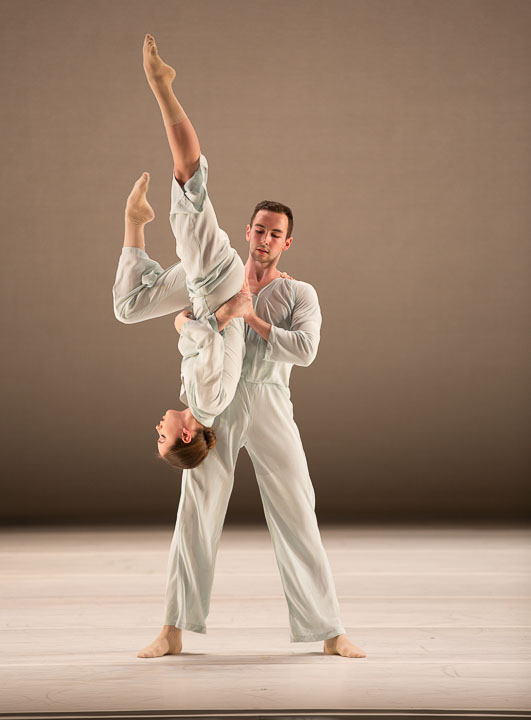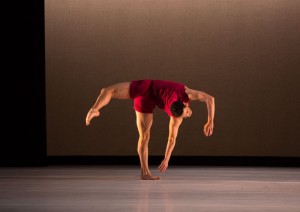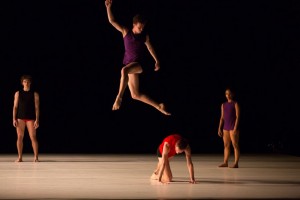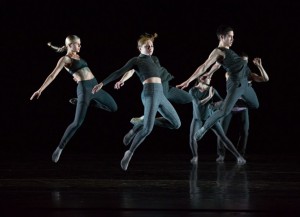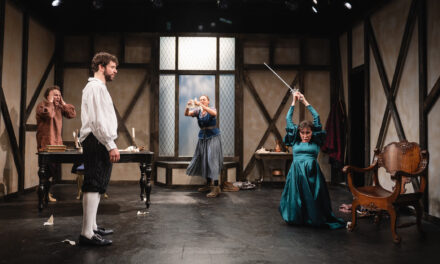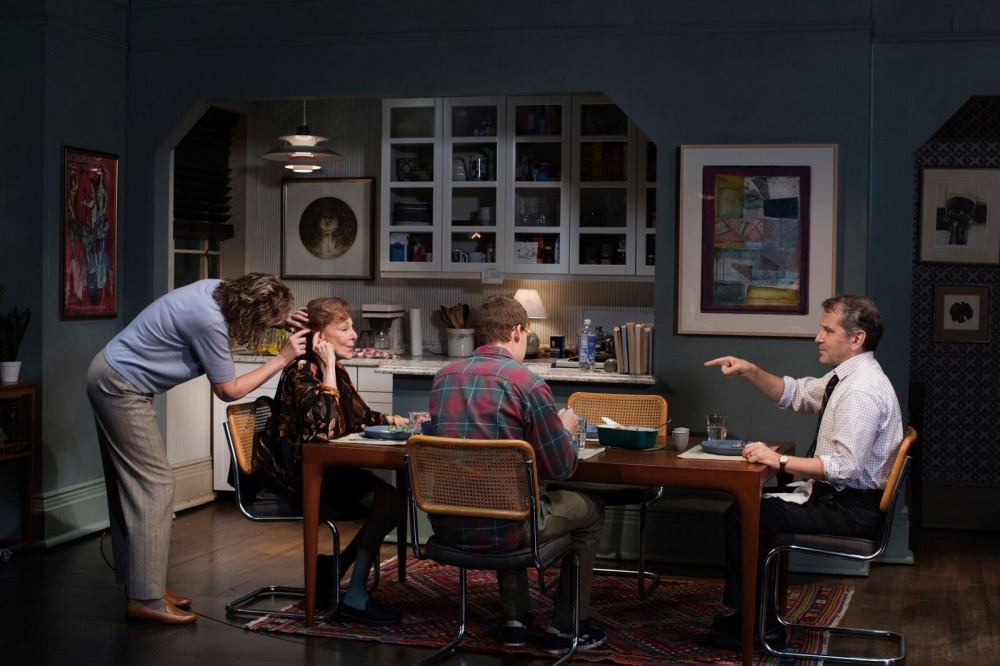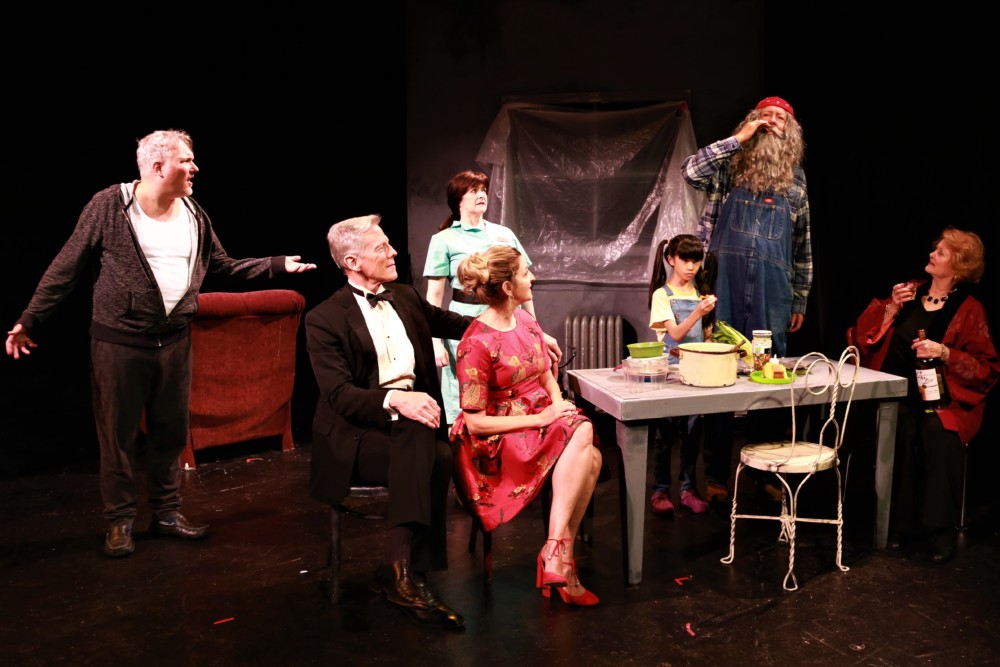Four smart choreographers handle large crowds of dancers with ingenuity and wit.
By Joel Benjamin
The prestigious Juilliard School just held its annual New Dances concert in the beautiful Peter Jay Sharp Theater. The theme of the 2015 edition was how to handle large groups of dancers. How four well-known choreographers put each different class of students through their paces, made for a fascinating and very varied evening.
“Strange Garden,” choreographed for the Class of 2019 by Helen Simoneau to an original score by Jerome Begin, was the first and most severe of the four works. It was like a giant animated chess game in which the dancers moved coolly, almost emotionlessly. Simoneau moved the 24 dancers in geometric patterns with one or two emerging at first to hit lunge positions, raise an angular leg or other short phrases, soon rejoining the group whose pattern had changed around them. Duets and trios became separate pools of activity from the massed group which kept walking or running about. There was very little touching, certainly nothing that would connote warmth or friendship. About 17 minutes long, “Strange Garden” displayed craft if not artistry.
Aszure Barton’s “return to patience,” to a brilliant melding of music by Caroline Shaw with a Chopin Mazurka, was warmer, but still put its cast of 24 (Class of 2018), through its paces. Dressed in sky blue jumpsuits, they first seemed divided along gender, but gradually melded together. Again, small groups emerged from the group. Sometimes single dancers did short phrases, soon merging into duets and trios, movements continually repeated to make interesting, soft-edged patterns around the stage. The music gave Ms. Barton’s movements a subtext that wouldn’t have been evident without it.
It was Nino Rota’s music that was the backbone of Zvi Gotheiner’s tongue-in-cheek romp, “Vivo Rota.” Nino Rota, famous for his collaborations with Federico Fellini, wrote music that evokes the surreal, debauched plots of that master filmmaker’s work. Gotheiner’s reaction was to have his large cast (Class of 2017) strut, sashay, hit sassy attitudes—everything but wink at the crowd. The mood was sensuous and fun and the cast tossed off his movements while also relating to each other with zest.
The most successful work, theatrically, if not choreographically, was the final one, “non sequitur paramour” by Kyle Abraham (in collaboration with the dancers of the class of 2016) to six, varying pieces of pop-tinged music. Although its movement vocabulary wasn’t large, Abraham, in close collaboration with lighting designer, Nicole Pearce (who designed all the evenings very varied lighting schemes), divided the work into short sections, each distinguished by quicksilver lighting changes. The dancers in one area of the stage were pitted against those in another or partly obscured by lines or circles of movement. They interacted ceaselessly with uncomplicated partnered steps flowing from one small group to another. The end result was a rich tapestry of nonstop, propulsive choreography that totally involved the cast.
The dancers were all had smooth, effortless techniques, although few stood out from the crowd. They know how to relate to each other and to the audience and still be faithful to the intentions of their very individual choreographers.
Lawrence Rhodes, the artistic director of the Juilliard Dance Division, is clearly the engine keeping these programs going. He should be proud of his students.
*Photos: Rosalie O’Connor
The Juilliard School – New Dances: Edition 2015 (December 11-15, 2015)
Peter Jay Sharp Theater
155 West 65th Street, between Broadway and Amsterdam Avenue, New York, NY
For tickets and information visit www.events.juilliard.edu
Running time: one hour 45 minutes, including one intermission


